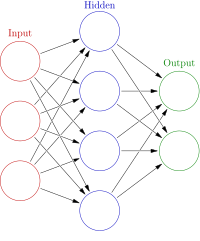
Photo from wikipedia
Single-task and cognitive-motor dual-task training (CMDT) has been extensively studied for the post-stroke function rehabilitation. However, little is known about the difference between the brain activities when these two types… Click to show full abstract
Single-task and cognitive-motor dual-task training (CMDT) has been extensively studied for the post-stroke function rehabilitation. However, little is known about the difference between the brain activities when these two types of tasks are being implemented. Therefore, neural correlates of single-cognitive/motor-task training (SCT/SMT) versus CMDT are investigated in this study. Specifically, a pure mathematical problem-solving task and a pure cycling task were designed for the SCT and SMT paradigms, respectively. For the CMDT, subjects should perform these two tasks simultaneously. Electroencephalography signals acquired during performing these two types of training are used to analyze the brain dynamic properties by event-related potential and event-related (de-)synchronization analyses. It can be seen from the results that compared with the SCT, theta event-related synchronization can be increased significantly by the CMDT (frontal theta:
Journal Title: IEEE Transactions on Cognitive and Developmental Systems
Year Published: 2022
Link to full text (if available)
Share on Social Media: Sign Up to like & get
recommendations!